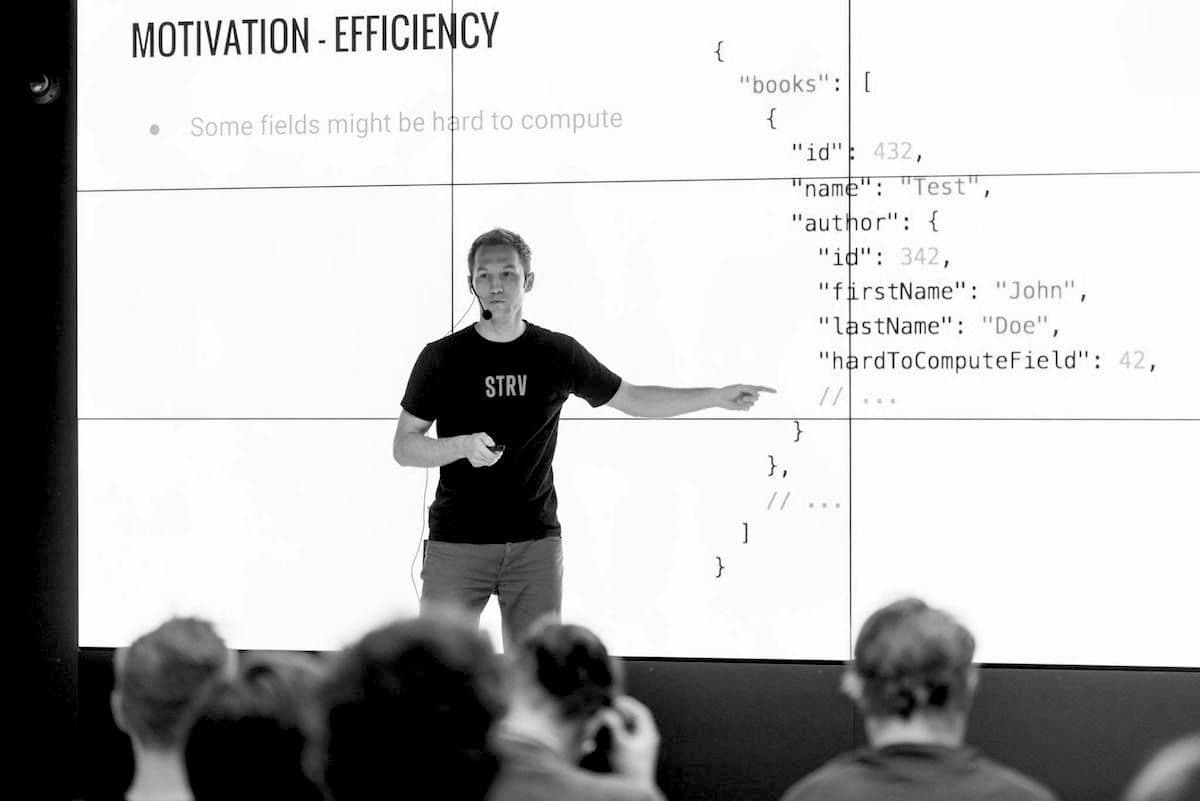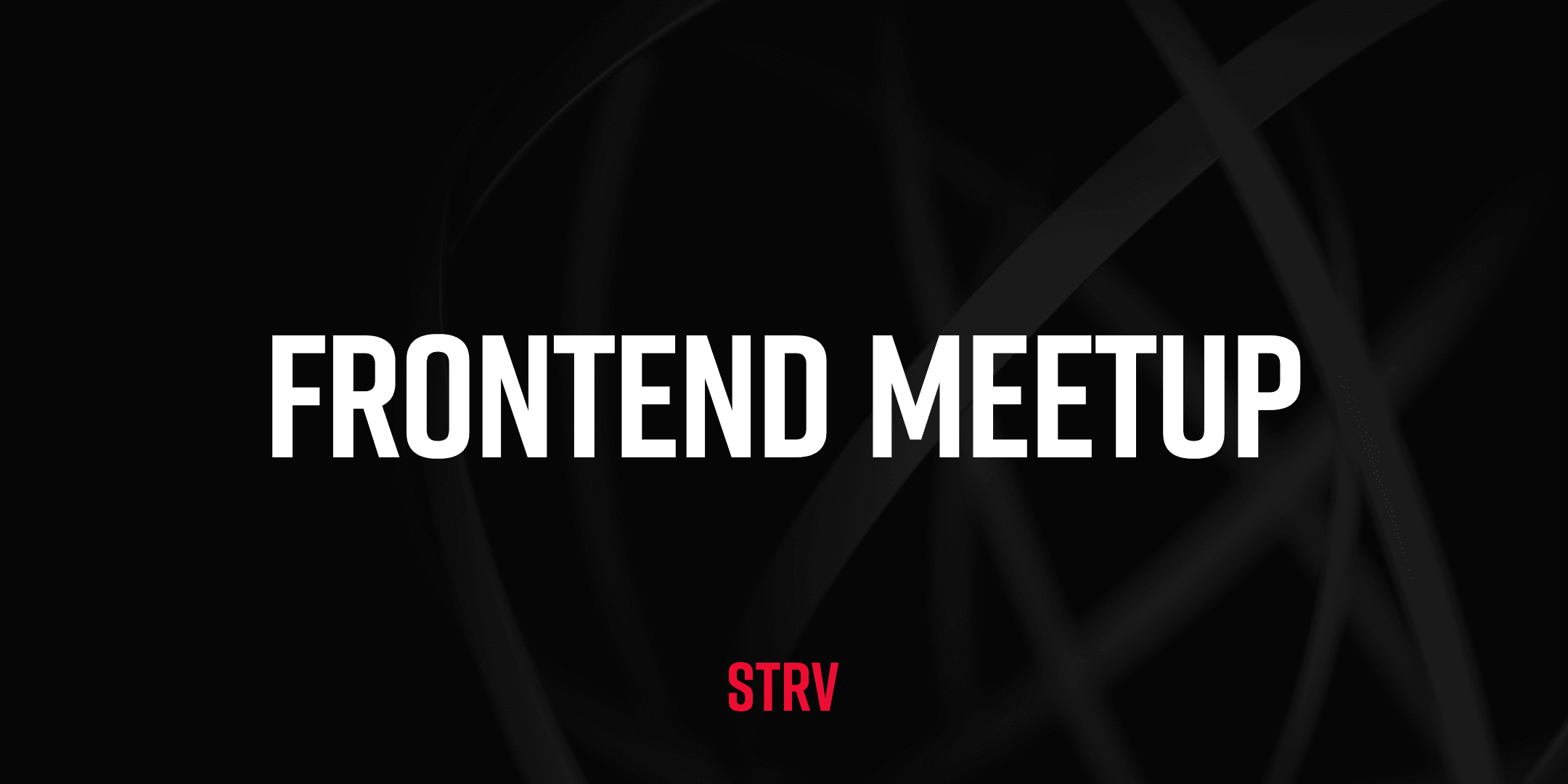You will receive tailor-made lessons, code reviews, homework, and the support of STRV seniors as lectors and mentors.
In 6 to 10 weeks – depending on the course – you advance your skillset while experiencing STRV’s company culture. Think working with us might be your next career move? This is a great way to find out what our expectations are, and what you can expect from us.
Let’s get into what STRV Academy offers – the course basics, plus a detailed look courtesy of Šimon Hrabec, one of our backend developers who attended Node.js Nights in 2017.
Šimon explains why our courses stands out, what he learned, and how it brought him from Microsoft to STRV.
We are currently accepting applications for 3 courses: React, iOS, and Node.js. To ensure individual attention, only about 20 people will be selected to participate (per course).
What can you expect if you’re one of them?
Our courses are free of charge and take place once a week. Because a different senior STRV expert leads each lecture, you get multiple perspectives based on first-hand experience.
Additionally, you are connected with a mentor from the very start – because we see mentorship as the most valuable aspect of any course.
Our mentors are STRV’s top engineers, and they provide guidance and support during the full course.
Through a combination of theory and practice, we encourage you to test out everything you learn a.s.a.p. Assigned tasks – both in-class and take-home – are designed to challenge and educate as efficiently as possible. If you get stuck, your mentors are there to help.
Some perks worth mentioning? A few floors above our office is our very own Scrollbar. It’s got crisp draft beer and a spacious terrace. We make sure you get acquainted.
We’ve got a gym you’re welcome to use, among other extras at your disposal. We also provide plenty of material and tips to further advance your progress, along with recordings of every lesson.
By the end of the course, you have a strong sense of STRV’s culture, and we’ve seen your tech skills in action. This mutual understanding often naturally leads to collaboration. STRV Academy’s 2018 courses brought us five new colleagues.
If all the pieces fit together, why wouldn’t we want you on our team?
Want to apply? Or want to know details about the topics each course covers? Follow the links:
Meet Šimon. Former student of STRV Academy, current STRV Backend developer:
You joined the course while working at Microsoft, in 2017. What convinced you to apply?
I’m really into learning, and Node.js was one of the things I wanted to explore. I was doing some courses online, but I missed the offline presence. Being at a lecture and having the chance to ask questions and talk directly with the lecturer is crucial.
What is special about this course specifically is how complete it is. You really do cover everything – how to set up a database, how to test the code and how to deploy everything. I haven’t seen such a complete course anywhere else. From beginning to end, it covered everything.
What did you see as the main differences between online self-learning and STRV’s course?
The problem with online learning isn’t that the material isn’t there. It’s that very little of it is actually complete or beneficial. Honestly, a lot of it is garbage. And it’s hard to filter.
Sometimes, it lacks an introduction. Or it’s shallow. And even if you find good material, the question is: If you put a 15-year-old kid in front of a computer, will he/she become an expert in a certain area?
No. You need structure, which you can’t find on the internet. There’s no guidance.
How did the guidance provided by Node.js Nights help you learn?
Jožka, who was STRV‘s platform lead for Node.js for Backend at the time, was leading the course (in 2017, the course was taught by only one person).
Because he was a very gifted and experienced programmer, he always put things into context with real-world tips, like, “This is a cool feature you might be using in the future,” and, “By doing this, you might face these kinds of issues…”
We had a Slack channel where we could discuss things, which was helpful, although I asked most of my questions during the lesson.
That’s another huge issue with online courses. They boast about having awesome forums where you can ask questions. But when you do ask, you have to wait a few days for the reply, and it often doesn’t really answer what you asked.
Had you been considering working for STRV before the course?
No, I just saw the course as a great opportunity. I thought, ‘It’s free, and STRV’s design department is doing a great job in almost everything, so why not learn from them?’ The description of the course looked great, very professional, so my expectations were quite high. And I wasn’t disappointed.
So, how did you actually end up here?
Simply put, I wasn’t happy with my job. Us programmers, we are very rational and systematic people. So I quit, started interviewing, evaluated all of my options, and tried to maximize the outcome. To me, that meant choosing STRV.
The course had given me insight about what it would be like to work at STRV, how they managed projects, and what kind of people worked there. From a technical point of view, things were very well thought-out.
STRV understands that the code and projects need to be well-structured, so time isn’t wasted on solving unnecessary issues. And I thought if I got to work in that environment, my job would be very enjoyable.
What is a benefit of the course some people may not realize?
You get recordings of the lessons once the course is done, which is great. You can watch them at home, pause, and practice. I watched some recordings multiple times because the lectures are dense and there are moments where you miss something.
You also get the presentations and some example code. There’s a bit of homework, but nothing overly time-consuming. It’s another way to try things out, and see if you have further questions.
Any hanging out during the course?
STRV is very open. It’s both their culture and strategy. This means that people chat and hang out all the time. There are a lot of meet-ups and events, so it was hard to differentiate between what were official STRV meet-ups, what was a part of Node.js Nights, and what was just hanging out. It all naturally came together. That was 2017, and it’s still like that now.




